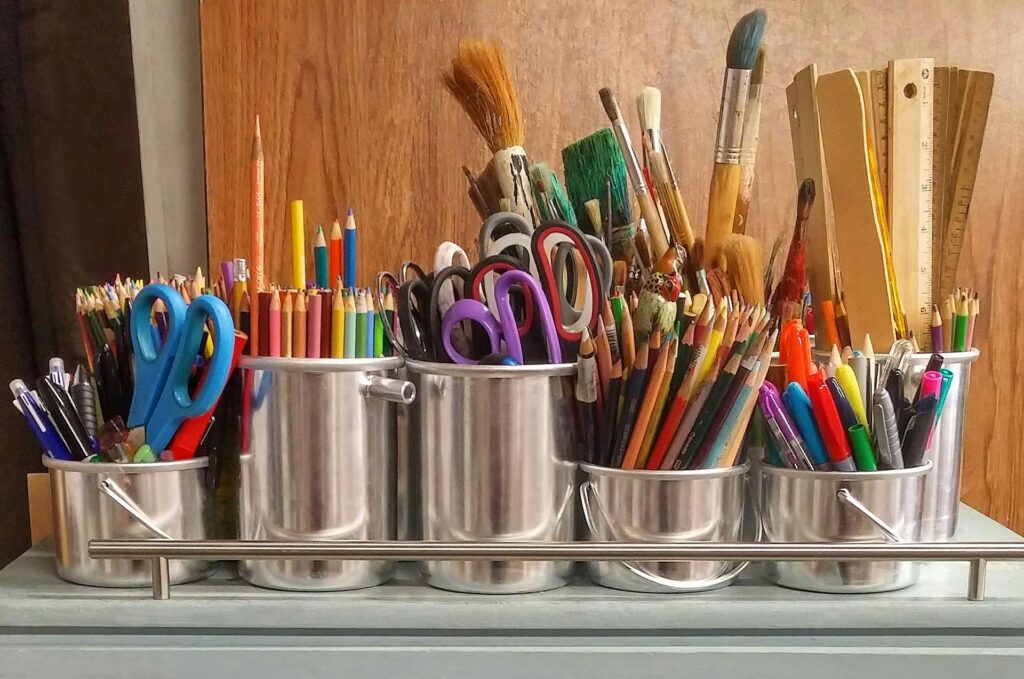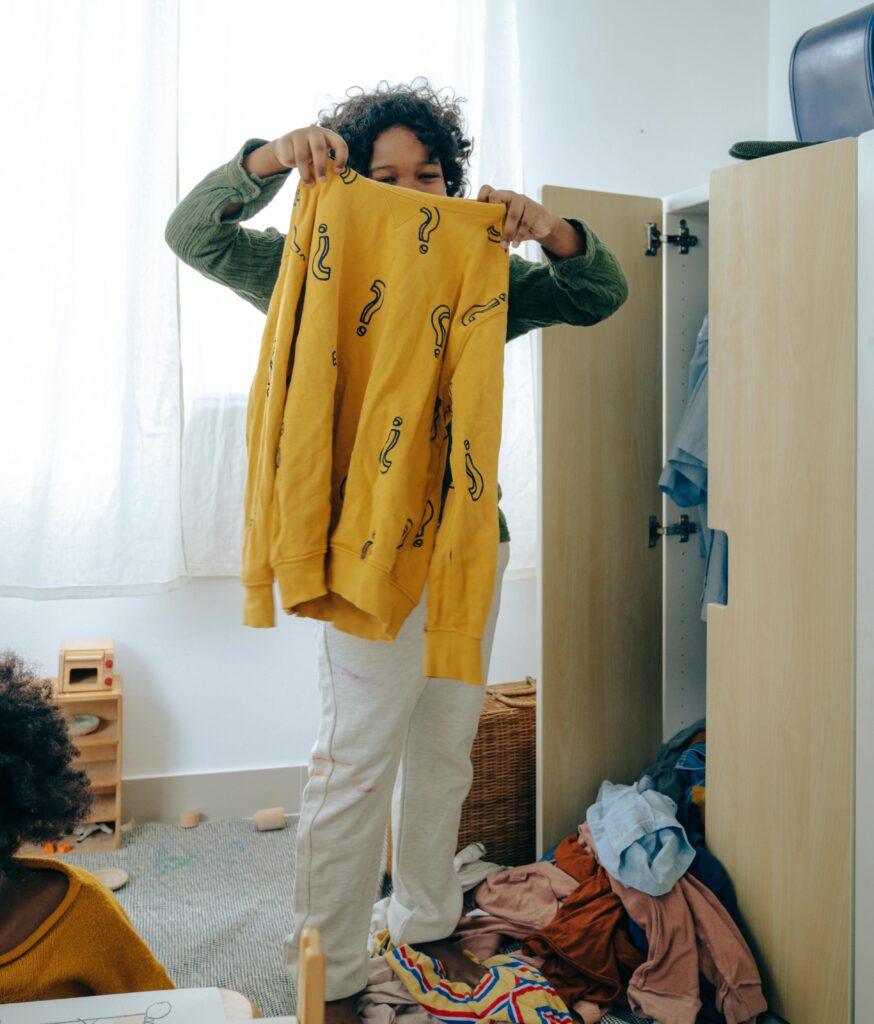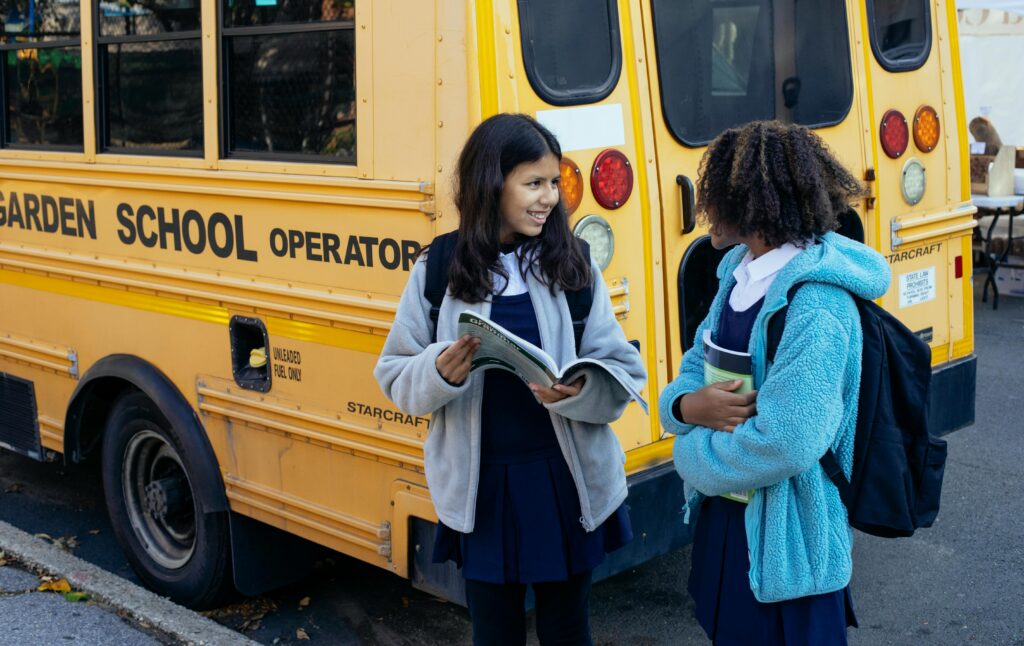When I was growing up, other kids would buy a bunch of new school supplies before the start of school, while I would sit on the floor of my room, testing my pens and highlighters on a piece of scrap paper to see which ones still worked. My family did go shopping for any items that were missing, but we made a point of using what we already had first.
These days, I’m not going back to school, but I still feel anxious and annoyed when back-to-school advertising starts in early August or even July.
All this marketing results in unnecessary spending and waste. According to some estimates, American families spend $570 per child on back-to-school items, and 77% of school supplies are wasted.
Try some of these tips to cut down on consumption and make the back-to-school season more sustainable for the planet and your wallet!
Eco-friendly back to school
What does eco-friendly back to school look like? It’s a combination of using what you already have, buying sustainable items, and setting yourself or your child up for sustainable habits in the school year ahead!
Do an inventory and reuse what you already have
This tip is pretty self-explanatory, but before heading to the store, check what you already have! Many items like backpacks, pencil cases, binders, scissors, rulers and calculators can be reused from year to year. You may also have pens, pencils and partially used notebooks lying around that can be used again during the next school year.
Based on your inventory, make a list of the school supplies that are missing. Shopping with a list will ensure that you only get the items you actually need!
Buy sustainable school supplies

For the things you must buy, look for items that are durable, made of sustainable materials and with minimal packaging. You could also try shopping at a thrift or secondhand store.
A few products to specifically look at are refillable pens and mechanical pencils, plant-based crayons, non-toxic glue, and solar-powered calculators or ones with rechargeable batteries. When it comes to paper and notebooks, look for recycled paper that’s certified by the Sustainable Forestry Initiative (SFI) or Forestry Stewardship Council (FSC).
Reduce paper use
Between note-taking, rough work, and books and textbooks, school can use a lot of paper! There are a few things you can do to reduce paper use.
For rough work, such as calculations and project outlines, you can use scrap paper—paper that’s only been used on one side. You could also look into taking notes digitally, whether that means typing up your notes or using a digital notebook where you can write by hand. As well, there are many digital planners and calendars that can take the place of a physical agenda.
When it comes to books and textbooks, try buying them used or reading them online. When you’re done with a book, if you don’t think you’ll read it again, you can donate or sell it. Some universities will even buy back textbooks!
Consider clothing

A new school year doesn’t have to mean a whole new wardrobe! Often you or your child can continue to wear many of the same clothes. But if clothes don’t fit anymore or you want to change things up, there are a few things you can do.
Try shopping at thrift stores and donating or selling clothes that no longer fit. Older siblings are a great source of hand-me-downs! You could also organize a clothing swap with friends to liven up your wardrobes without buying new. If you are buying new, look for clothes that are good quality, ethical and made of eco-friendly materials like cotton.
Green your school lunches
School lunches are another area where you can cut down on waste. Try packing lunches and snacks in reusable containers, including reusable snack bags and cutlery. Don’t forget a reusable water bottle! You could also pack cloth napkins to avoid using disposable napkins. Find out more sustainable kitchen swaps here.
Incorporate school lunches into your meal planning to come up with ideas for healthy lunches, use up leftovers, and help prevent food waste. School lunches are also a good opportunity to experiment with plant-based lunches!
Rethink how you get to school or campus

If possible, choose active forms of transportation like walking, biking or scootering to get to school. This reduces transportation emissions and builds healthy habits.
If those forms of transportation aren’t convenient or accessible, look at carpooling or taking the school bus or public transit—some high schools, universities and colleges even offer bus passes to students.
Tips for a sustainable back-to-school season
With the excitement of a new school year, many families rush to the store to buy new supplies. While some spending is inevitable, you may already have much of what you need, and there are sustainable alternatives for many common items. With a bit of planning, you can make the back-to-school season more sustainable and reduce how much you spend while you’re at it!
Happy back to school, everyone!
I want to know: How do you prepare for back to school in a sustainable way?
Categories and tags:
Share this post:

